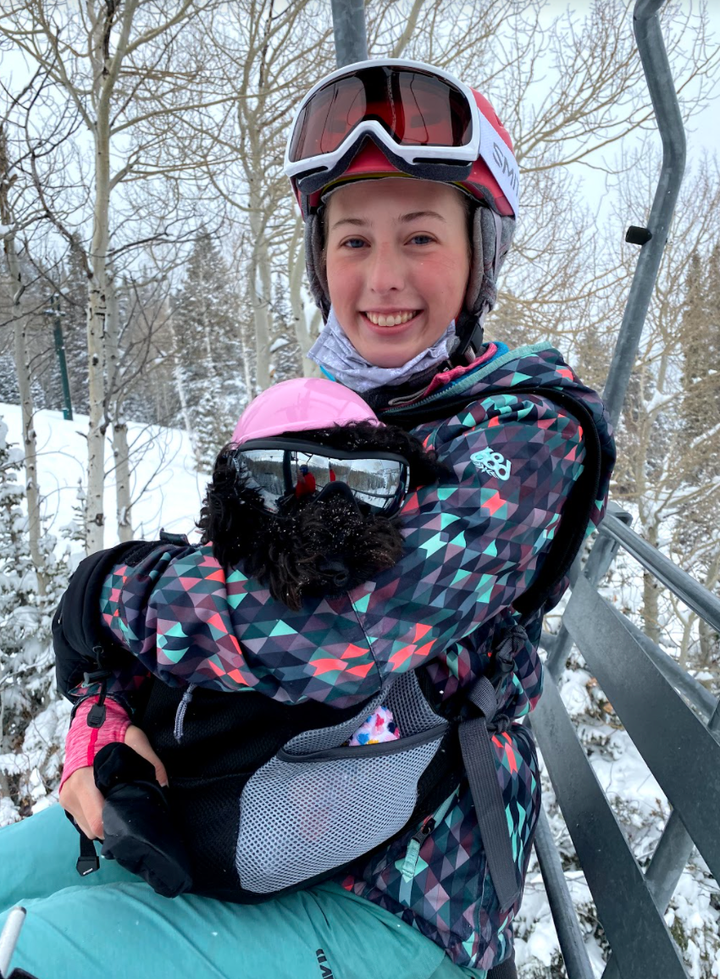People kept taking my picture. They asked to grab photos while I waited in line, snuck quick shots they thought I didn’t notice, and brazenly pointed their phone at me as I passed them.
I could not blame them ― I would probably take a picture, too. After all, it’s not every day you see a snow-skiing dog. And my fellow skiers likely didn’t know this, but they were sharing the mountain with what is, as far as I know, the world’s first downhill-skiing service dog.

Since I was three years old, I’ve been skiing, and it’s the only sport I’m even mildly successful at. So when I got to spend a weekend on the slopes in Park City, Utah, with my little brother, I jumped at it. We contracted and recovered from COVID-19 in mid-December, and we figured the last weekend of January would be the perfect time to squeeze in a quick ski trip while COVID antibodies still protected us. I booked a hotel and lifted tickets at Deer Valley Resort, and for the first time since having a service dog, I took a ski trip.
I’ve been autistic and ADHD my whole life, but my diagnosis of both came late (ages 19 and 22, respectively), and it wasn’t until 2019 that I considered the use of a service animal. Then, when the pandemic sent us all into lockdown at home, I decided the timing was perfect for selecting and training an animal. Maeve, a miniature Aussiedoodle, came home with me the first week of April last year.
She was already an older puppy and had a calm, attentive demeanor. We spent nearly three months training her to provide timed medicine reminders during the day and another three months teaching her to behave calmly in public spaces. She was a task-trained service animal by the time she was a year old. Because autistic and ADHD individuals struggle with executive functioning (such as task planning, working memory, distractibility/impulsivity, and awareness of the passage of time), our neurologically-based difficulties can make a responsibility like taking medicine at specific times day nearly impossible. Maeve, however, ensures that I never miss a dose.
So now Maeve goes everywhere I go, and her presence is safeguarded by law. The Americans with Disabilities Act (ADA) protects task-trained, well-behaved service animals in every context except those where the animal’s inclusion would threaten the health or safety of others. For example, you cannot allow your service dog to eat off the table at restaurants or carry it on a roller coaster with you.
For this reason, service animals are not allowed to board and freely ride ski lifts independently. Even avalanche dogs can struggle with riding lifts, and your average service dog is not trained to safely travel on an open chairlift. The chance of the animal intentionally (or unintentionally) disembarking the chair mid-lift is too high and poses a threat to skiers below. Additionally, in the case of a chairlift malfunction, the tool used to evacuate humans from a suspended chair is unsuitable for securing and lowering a dog to the ground. Thus, every North American ski resort has a quiet rule: no service animals on the slopes.
This ban has only one problem: not all service animals must board or freely ride a chairlift to stay with their handlers. Once upon a time, service animals were used primarily by the blind and deaf and were almost always large dogs. The nature of those disabilities can make a larger animal advantageous, and 50-plus-pound breeds like golden retrievers and German shepherds once comprised the overwhelming majority of service animals.
